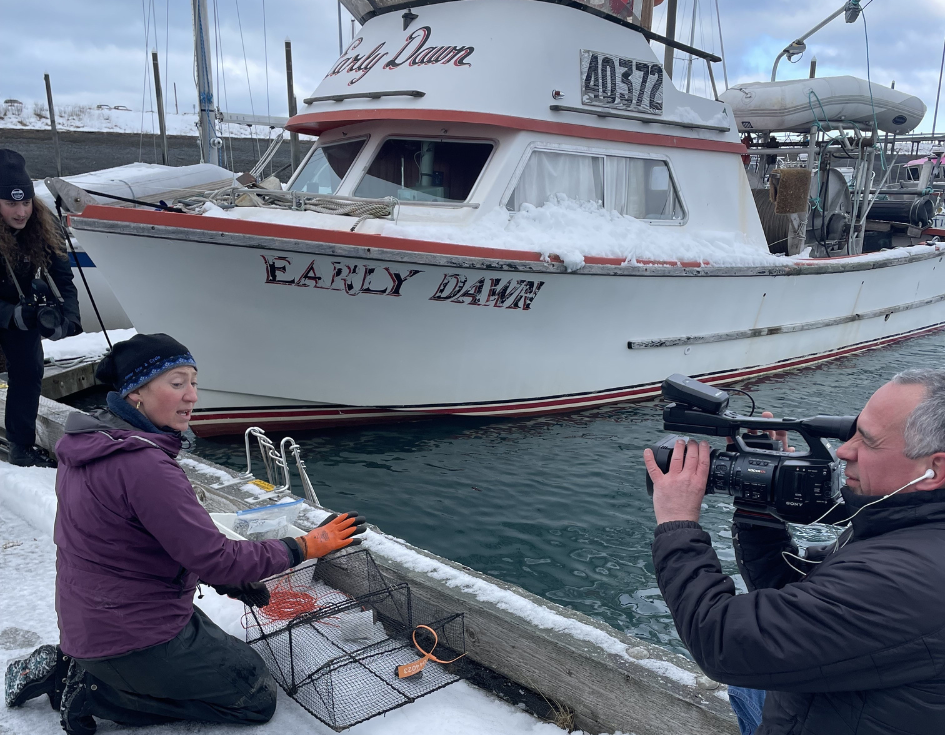Did you know that UAA students are warning Alaskans about a dangerous new invasive crab species that has the potential to damage our fisheries industries?

Did you know that UAA students are warning Alaskans about a dangerous new invasive crab species that has the potential to damage our fisheries industries?
A looming danger: On Tuesday, July 19, 2022, on Annette Island in Southeast Alaska, off the coast of Metlakatla, evidence of European Green Crab was discovered. These small creatures have been working their way up the west coast, where they aggressively hunt worms, clams, mussels, juvenile king crabs, and even juvenile salmon. They burrow into the shoreline, contributing to coastal erosion.
- Their growth rate is particularly worrying. Within 12 months, the population can go from in the 100s to in the 100,000s. Luckily, no green crabs have been found beyond Metlakatla, which is just south of Ketchikan, for now. But scientists say their spread is inevitable.
The economic impact is real: These crabs have the potential to damage Alaska’s multi-billion dollar fisheries industries, according to NOAA. The governor of Washington recently declared a state of emergency over the green crab and has spent millions fighting their spread.
On the Alaska front: The Kachemak Bay National Estuarine Research Reserve (KBNERR) in Homer, Alaska engages a team of scientists and educators, to research, monitor, and educate around the ecosystem that is Kachemak Bay. Their team also assists with monitoring invasive species and educating about best practices.
- This reserve (the only one in Alaska) is part of a national system of reserves supported by the National Oceanic and Atmospheric Administration (NOAA) and the Alaska Center for Conservation Science (ACCS) at the University of Alaska Anchorage (UAA).
A partnership is born: In the fall of 2022, UAA’s Dean of the College of Arts and Science Jenny McNulty, and the Vice Chancellor of Research Aaron Dotson visited the Kachemak Bay Reserve. During this visit, the groups discussed joining the skills and resources of KBNERR and UAA and working together on a project. The chair of UAA’s journalism and public communications department (JPC) Dr. Joy Mapaye, Atwood Chair of Journalism John Sharify, and JPC professor Paola Banchero all worked together to create a plan.
- The partners prepared for a spring course, co-developing an experiential learning opportunity where students would be able to visit the reserve in Homer to facilitate the production of media materials that the preserve needs to support its mission.
A successful outcome: When the UAA team learned about the European Green Crab, they knew this was an important issue. New materials were direly needed to help with outreach efforts. KBNERR staff provided information and content to the professors and students, including classroom visits at UAA to develop context around the issues of marine invasives.
- The staff at KBNERR provided feedback as the students began creating radio spots, videos, memes, print materials, and news articles. Now, KBNERR will use them in their outreach and education efforts.
Why it matters: The University of Alaska students of today will become Alaska’s workforce tomorrow. Engaging students to tackle local challenges inspires them to want to invest in Alaska once they graduate.
- This community-engaged project will have a real-world impact on a regional issue NOAA biologists are calling “a wake-up call.” These students can now say they are part of the solution.
How to help: The only way to stop the spread of green crabs is to trap them. Look for the five
“spines” on either side of their eyes. You can check out this Crab Identification Guide from KBNERR.
Officials are asking people who find green crabs in Metlakatla to bring them to the Department of Fish and Wildlife office. Sightings can also be reported in Metlaktla and elsewhere to the Alaska Invasive Species Hotline at 1-877-INVASIV.
Additional resources:
- Using eDNA to Monitor Alaskan Waters for Invasive European Green Crabs. Voracious crustacean known to gobble juvenile salmon and outcompete Dungeness crab.
- Evaluation of a Habitat Suitability Model for the Invasive European Green Crab Using Species Occurrence Data from Western Vancouver Island, British Columbia, July 2008. (PDF, 51 pages)
- Shorezone Habitat Capability Modeling: A study of potential suitable habitat for the invasive European green crab (Carcinus maenas) in Southeast Alaska, British Columbia, and Washington State, August 2007. (PDF, 75 pages)
- A green crab's super power: eating through its gills
- AIR Invasive Green Crab Monitoring Project (PDF, 5 pages)
- Invasive Green Crab Monitoring Project Season Summary 2021 (PDF, 10 pages)
